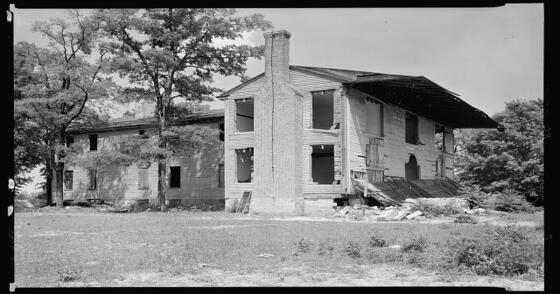Montmorenci is the name of a plantation home in Warren County that was, by all accounts, over-the-top. It had the basics that many homes of the day had – porches, staircases, mantels. But skilled artisans – probably enslaved members of the Williams family – created lavish features that were admired by many, near and far.
One of those admirers was Henry Francis Du Pont, who bought the mantels, façade and that fabulous freestanding circular staircase when the home was being deconstructed in the early 1900’s for his own home, Winterthur.
Visitors to the Winterthur Museum, Garden and Library in Delaware can see that gravity-defying staircase, two of the mantels and the façade, according to Carrie Greif, the museum’s estate historian.
Greif spoke with Bill Harris and co-host Mark Pace on the tri-weekly history segment of TownTalk about how pieces of a Warren County home came to be part of the Du Pont estate, a 175-room mansion-turned museum that houses more than 90,000 examples of American decorative art.
Montmorenci was located on what is now known as Lickskillet Road, the home of William “Pretty Boy” Williams. It was truly a remarkable example of the Federal style, Pace said, which was so popular in the Warren County, Halifax and Roanoke Valley area between 1810 and, say, 1850.
The mantels weren’t just constructed to be put in front of fireplaces; one had the Battle of Lake Erie carved into it; the porch wasn’t just where people could get out of the weather on their way into the home, it went all the way across the front of the house. And that staircase? It wasn’t just a way to get from one floor to another – it was a freestanding, spiral case that was a focal point of the interior.
“The staircase is a focal point for visitors at Winterthur,” Greif said, but it bears little resemblance to how it was installed at Montmorenci. And when workers were taking it apart to prepare it for the trip to its new home, they learned about how it was originally installed, she said.
But just how did a piece of architecture from North Carolina catch the attention of a wealthy Delaware industrialist?
To be sure, Montmorenci was a noteworthy house in its day; and there was one particular collector who contacted one of Du Pont’s entourage that set the deal in motion. She bought it for $6,300 and sold it to Du Pont for $12,000.
Greif said the staircase has a “unique vernacular expression” and displays a balance of ornamentation and historic significance. She posits that enslaved artisans owned by Williams created the staircase.
She said the staircase was sold in 1930, and the additional items were purchased later when it was discovered that more wood – yellow pine – was needed to complete the installation.
Pace said the house was built in 1820, one of five associated with the Williams family. And it was gone by the 1940s, shortly after all the interior architecture was removed.
“It just wasn’t around for very long,” he added. But several key parts remain. In a museum in Delaware.
Visit https://www.winterthur.org/ to learn more and to see a photograph of the Montmorenci staircase.
CLICK PLAY!
